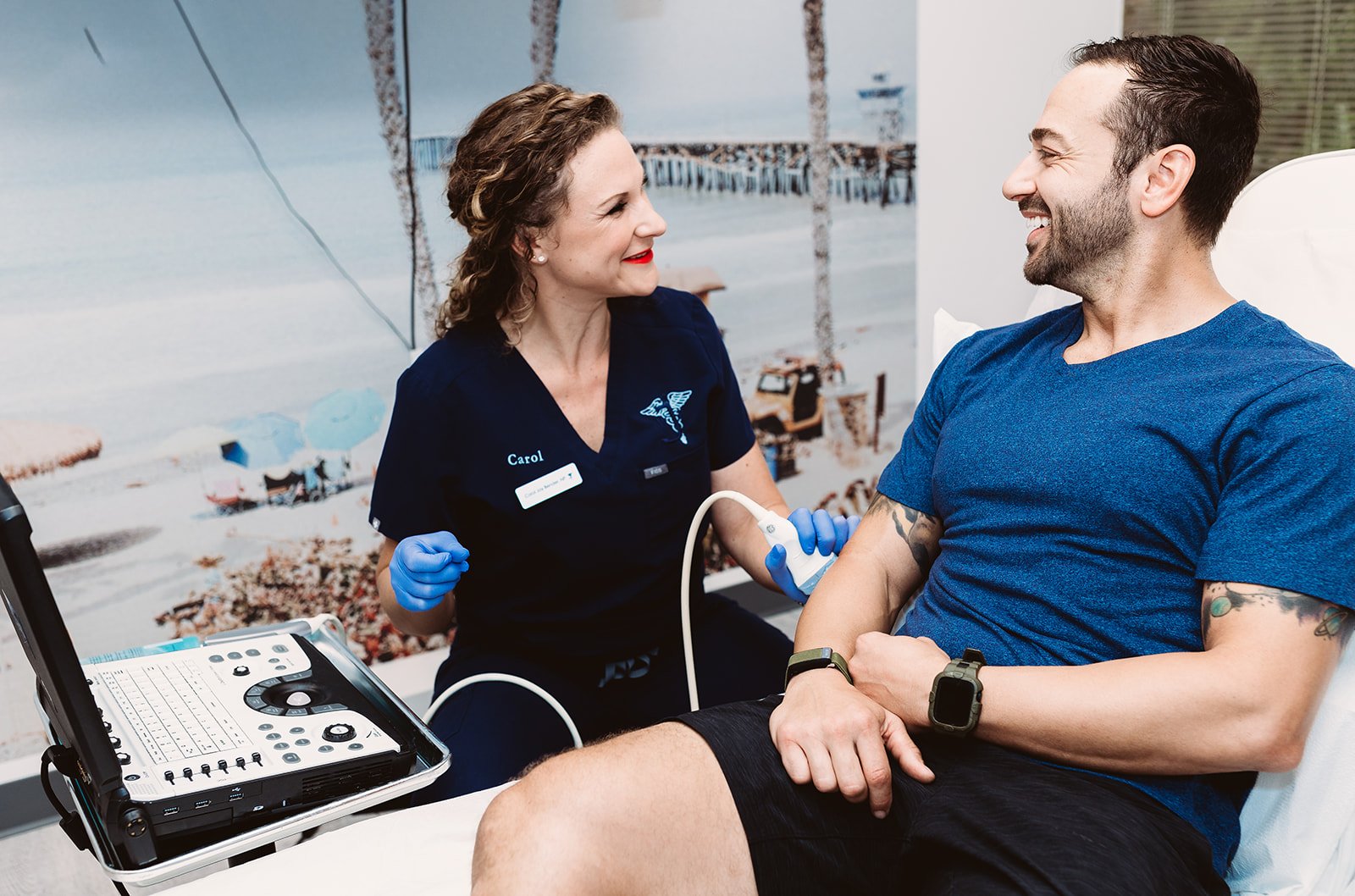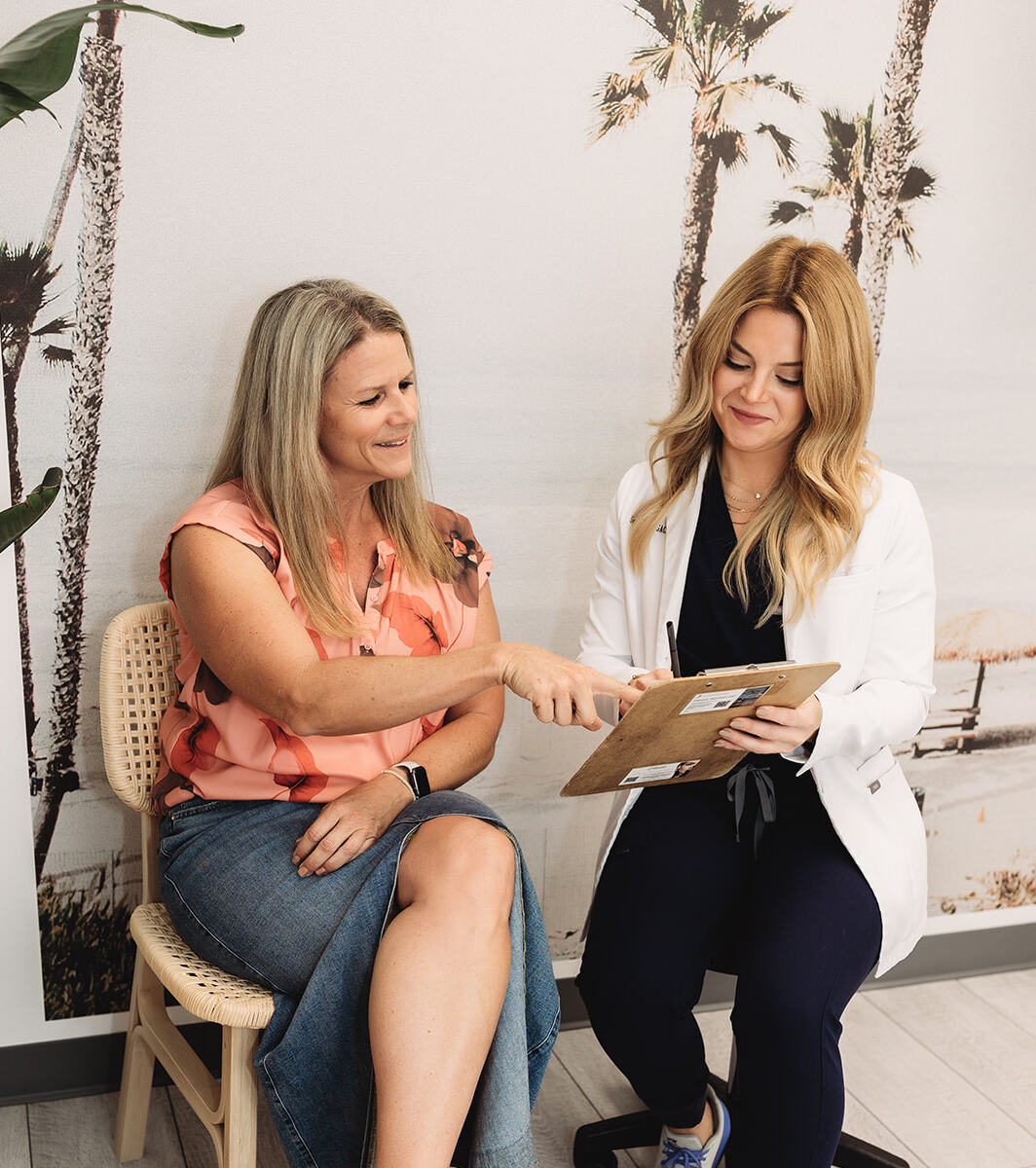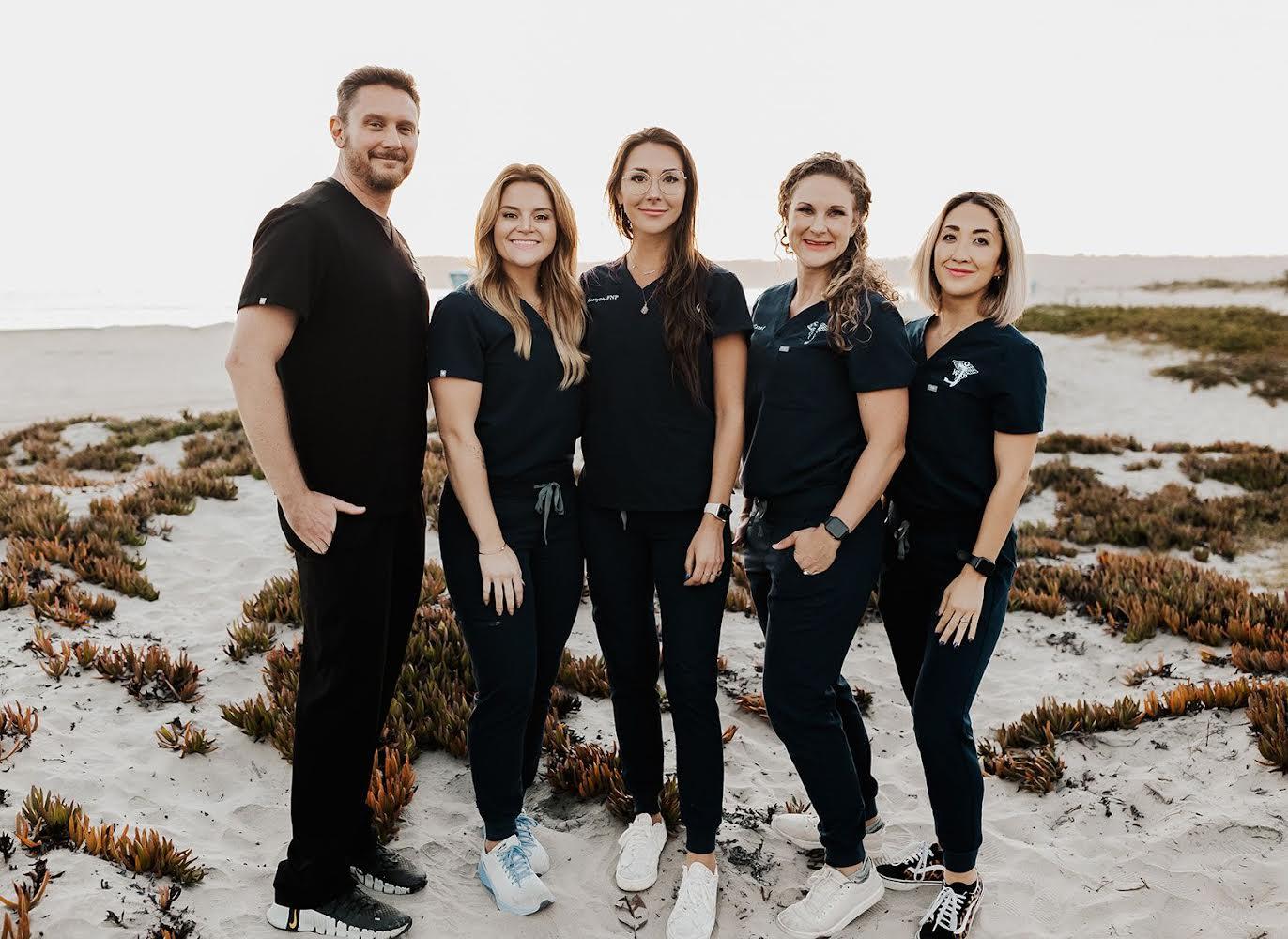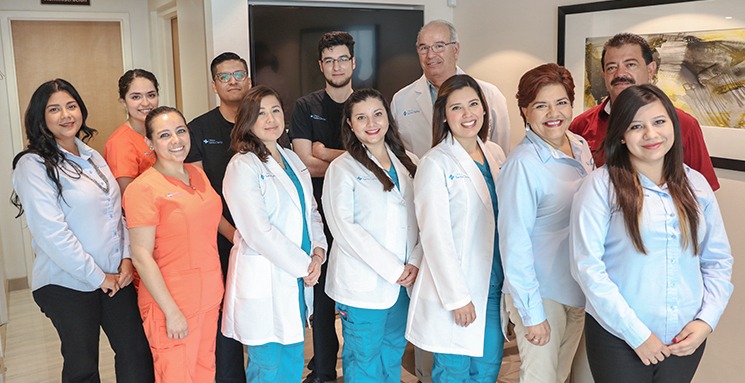Scientific Research
Integrative and regenerative medicine research guides our evidence-based medical care.
We are medical first. We are a holistic clinical practice with a wide range of degrees in healthcare. We are all continuing to advance our education and push the limits of our knowledge to serve our patients with the most advanced preventive and non-invasive medical care available.
Evidence-based practice is the foundation of our work.
Here’s how we look at it. Our goal is to stop the progression of the arthritis and then shrink it, reduce it or even reverse it. For example, research indicates that a molecule in our bodies called alpha-2-macroglobulin (A2M) is involved in stopping arthritis from progressing. Let’s learn from this research and then let the body’s healing capabilities do the work of rebuilding the cartilage and surrounding tissues.
We aim to support our patients on the most efficient path to healing.

Supporting Evidence
| Ackermann RT, Mulrow CD, Ramirez G, Gardner CD, Morbidoni L, Lawrence VA. Garlic shows promise for improving some cardiovascular risk factors. Arch Intern Med. 2001;161(6):813-824. |
| Simons S, Wollersheim H, Thien T. A systematic review on the influence of trial quality on the effect of garlic on blood pressure. Neth J Med. 2009;67(6):212-219. |
| 1 Elevation of HDL, LDL, and liver enzymes in the beginning which normalize with continuing treatment Leuschner, F. A. Leuschner. Research report no. 0050/84 of December 27, 1983 Maeda, A. et al. Gendai no Shinryo 22 (1980) 189-192 and 1461-1465 Fasoli, A. Therap. Select. Risk/Benefit Assess. Hypolipid. Drugs G. Ricci et al. (eds.) Raven Press: New York 1982, 257-262 Suo, T. et al. Kiso to Rinsho 15 (1981) 3046-3051 Belousova, S.S. et al. Kardiologiya 25 (1985) 112-115 Izumi, H. et al. 11th Proceed Jap. Atheroscl. Socl, Tokyo 1979 Nakamura, H. et al. Jap J. New. Rem. Clin. 22 (1973) 1565-1575 Spigai, C. Med. Heute 19 (1970) 197-198 Thurnherr A. Therapiewoche 7 (1956) 116 Friehe, H., R. Fontaine Report no. 840160 of December 16, 1978 Arsenio, L. et al. Clin. Ter. 114 (1985) 117-127 Tomasevic, M. Unpublished report no. 842746 Takahashi, S. Shinryo to Shinyaku 17 (1980) 3051-3064 Blagosklonov, A.S. et al. Kardiologiya 26 (1986) 35-38 2 Angina Pectoris Serkova, V.K. Klin. Med. (Moscow) 64 (1986) 91-95 Spesivtseva, V. G. et al., Lipostabil Symposium Moscow, Nov. 1984 Kalmykova, V.I., E. B. Zakharova, Sov. Med. 4 (1989) 5-9 Peripheral Vascular Klemm, J. In: Phosphatidylcholine. H. Peeters (ed.) Springer: Berlin 1976, 237-243 Luczac, Z., R. Leutschaft. Unpublished report no. 842762 Pristautz, H. Munch. Med. Wschr. 117 (1975) 583-586 Hevelke, G. et al. Med. Welt 30 (1980) 593-602 Liver disease Salvioli, G. et al. Il Fegato 21 (1975) 5-25 and: 4th Int. Sympos. Atheroscl., Tokyo 1976 and: Diab. Obes. Hyperlipoprot., Cupaldi, V. et al. (eds.), Academic Press: New York 1987 Salvioli, G. Scand J. Gastroenterology 12 (1977) 841-847 Salvioli, G. et al. Gut 19 (1978) 844-850 Gaskina, T.K. et al. Voprosy meditsinskoi khimii 331 (1987) 96-99 Cell Membranes Ehrly, A.M. Report no. 842276 of March 17, 1975 – and R. Blendin in: Phosphatidylcholine, H. Peeters (ed.) Springer: Berlin 1976, 228-236 Blagosklonov, A.S. et al. Kardiologiya 26 (1986) 35-38 3 Nei’mark Al, Zhukov, VN et al. Use of isradipine and EPL for protection of the kidney during extracorporal lithotripsy Urologiia I Nefrologiia. (6):19-21, 1998 Nov-Dec 4 Kuntz, E. The “essential” phospholipids in hepatology – 50 years of experimental and clinical experiences Z Gastroenterol (Suppl 2) 1991: 29:7-13 |
| Hanselman CJ. Timing of tissue plasminogen activator for acute ischemic stroke: Outcomes-based recommendations for practice. J Neurosci Nurs. 2014;46(6):314-320. |
| Baer S, Nabeta T, Maaniitty T, Bax JJ, Saraste A, Earls J, Min JK, Knuuti J. Prognostic value of coronary computed tomography angiography-derived atherosclerotic plaque analysis in the ISCHEMIA trial. Eur Heart J. Published online September 12, 2023. doi:10.1093/eurheartj/ehae471( Oxford Academic ). |
Ashapkin, V. V., Kutueva, L. I., & Vanyushin, B. F. (2019). Epigenetic clock: just a convenient marker or an active driver of aging?. Reviews on Biomarker Studies in Aging and Anti-Aging Research, 175-206.
Ben-Avraham, D. (2015). Epigenetics of aging. Longevity Genes, 179-191.
Gravina, S., & Vijg, J. (2010). Epigenetic factors in aging and longevity. Pflügers Archiv-European Journal of Physiology, 459(2), 247-258.
Moskalev, A., Aliper, A., Smit-McBride, Z., Buzdin, A., & Zhavoronkov, A. (2014). Genetics and epigenetics of aging and longevity. Cell Cycle, 13(7), 1063-1077.
Park, J. H., Yoo, Y., & Park, Y. J. (2017). Epigenetics: linking nutrition to molecular mechanisms in aging. Preventive nutrition and food science, 22(2), 81.
Thompson, M. J., Chwiałkowska, K., Rubbi, L., Lusis, A. J., Davis, R. C., Srivastava, A., … & Pellegrini, M. (2018). A multi-tissue full lifespan epigenetic clock for mice. Aging (Albany NY), 10(10), 2832.
Unnikrishnan, A., Freeman, W. M., Jackson, J., Wren, J. D., Porter, H., & Richardson, A. (2019). The role of DNA methylation in epigenetics of aging. Pharmacology & therapeutics, 195, 172-185.
Vaiserman, A. M. (2010). Hormesis, adaptive epigenetic reorganization, and implications for human health and longevity. Dose-Response, 8(1), dose-response.
Vaiserman, A., & Pasyukova, E. G. (2012). Epigenetic drugs: a novel anti-aging strategy?. Frontiers in genetics, 3, 224.
Vaiserman, A. M. (2008). Epigenetic engineering and its possible role in anti-aging intervention. Rejuvenation Research, 11(1), 39-42.
Bocci, V. (2011). The Clinical Application of Ozonetherapy. In Ozone. Springer Science+Business Media B.V. DOI 10.1007/978-90-481-9234-2_9. Retrieved from https://www.ncbi.nlm.nih.gov/pmc/articles/PMC7498916/
Ghusn, W., De la Rosa, A., Sacoto, D., Cifuentes, L., Campos, A., Feris, F., Hurtado, M. D., & Acosta, A. (2022). Weight Loss Outcomes Associated With Semaglutide Treatment for Patients With Overweight or Obesity. JAMA Network Open, 5(9), e2231982. https://www.ncbi.nlm.nih.gov/pmc/articles/PMC9486455/
Read more about our clinical expertise and experience as it relates to helping you achieve your unique goals:
- CASE STUDIES
- BLOG
- PODCAST
- ABOUT US
Read real case reports written by our medical providers revealing the results of our client treatments. These reports showcase various indications and results, and demonstrate the overall effectiveness of our treatments and personalized care.
Stay informed and inspired with our latest insights. Our blog covers a wide range of topics from wellness tips to cutting-edge treatments, empowering you with knowledge for a healthier, happier life.
Tune in to our podcast for expert interviews and deep dives into the world of health and wellness featuring our founder and our providers. Get valuable advice on optimizing your wellbeing from our practitioners and thought leaders.
Learn more about our mission to empower people through natural and regenerative health solutions. Our team is dedicated to helping you heal naturally and live fully, using the latest innovative treatments tailored to your unique needs.
-
Item #1
-
Item #2
-
Item #3



